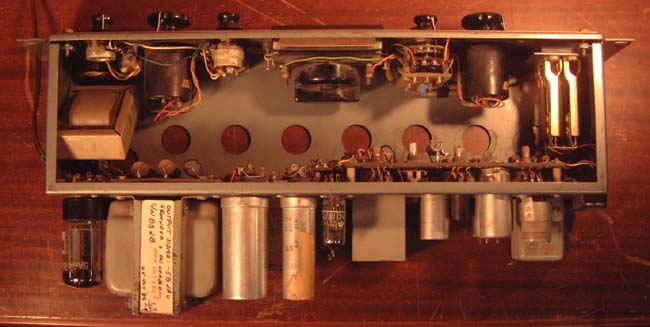Compression Obsession: The Universal Audio 175 and 176
 |
|
The Universal Audio 175 Compressor
|
–Jason Carmer (Third Eye Blind, The Donnas)
“The best sounding limiter [176] ever made by anybody.” - Richard Kaplan, (Neil Young, Moody Blues)
Perhaps not as widely known as their later relative the 1176, the Universal Audio 175 and 176 Limiting Amplifiers are nonetheless still used and sought after in the audio community, and are rare on the vintage market. Some fans of this compressor contend it is still the best compressor ever made!
We’ve had a couple of these fine gems (both 175Bs) floating around the shop for some time now. We just recently got one of them tuned, tubed and back to its former glory much to my pleasure (Thanks James Gangwer!). No surprise that the unit truly sounds awesome—similar to a Fairchild, for reasons I’ll explain.
The design began as the 108 tube preamp, which was found in the original console at Bill Putnam’s first studio, Universal Recording in Chicago; It was also found early on at his Hollywood digs as well. This amp predates the first groundbreaking modular mic pre, the UA 610. The 175 was one of the first commercially available Universal Audio products, and was introduced in 1961.
Like the Fairchild compressor line, the 175 and 176 were based around a variable-mu tube gain reduction design. This means that gain reduction is controlled by highly unique variable-mu dual triode tube, which is no longer manufactured. Variable-mu tubes have the ability to reduce their mu (gain), as the input signal increases.
With its 19’ 2RU chassis design it was considered “compact” and the original manual claims it to be the smallest available compressor when it was introduced. Many compressors of this era were constructed as “panels” such as the Gates and RCA compressors, which usually took around six rack spaces.
 |
|
"A plethora of tubes and transformers"
|
A plethora of tubes and transformers; how can you go wrong?
After getting familiar with the unit, it becomes clear that the 175 and 176 truly have much in common with their offspring: the 1176. Threshold is set with the Input control, so setting your compression and output gain is a similar two-fisted operation. The 175 has a fixed ratio of 12:1—but similar to 1176, the 176 offers similar selectable ratios of 2:1, 4:1, 8:1 and 12:1; The multiple ratios are achieved by a multi-tapped transformer. Also similar to the 1176, Attack and Release controls are at their fastest when fully clockwise. The attack time is adjustable from 100 to 1000 microseconds, while release is adjustable from 27 to 527 milliseconds. Also, the compression circuit can be clicked off with a firm counter-clockwise twist, just like the 1176.
The meter is switchable to view Input, Output, or Gain Reduction. The Input and Output controls are both stepped at 2dB increments, and “Vernier” controls are provided for both Input and Output allowing fine-tune adjustment of the gain structure between the 2dB increments.
The front panel also has archaic “Double Tip” Input and Output jacks from a bygone era that at first glance, I took for standard 1/4” or TRS; The cables these inputs and outputs utilized actually shared two 1/4” jacks at the end of each cable, and were yet another interesting inheritance (Like TT connections) from the phone industry.
The 176 shortly followed the initial release of the 175 and were concurrently available models. Apparently, the original 175 was stripped, and had no Input or Output gain control. Other units such as the 175B/C and 176 had gain control for Input and Output. Later, in addition to these units there was also the 177, which was without metering.
 |
-Will Shanks
Special thanks to Paul McManus